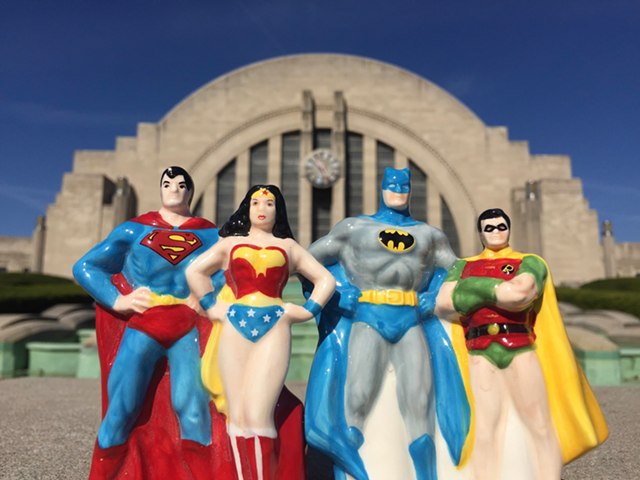
John Waters, primarily known as an filmmaker whose satires like Pink Flamingos, Pecker, Hairspray and Mondo Trasho skewer uptight American society while embracing those on its cultural fringes, is also a distinguished visual artist. His work is in the collections of The Baltimore Museum of Art and The Museum of Modern Art, The Metropolitan Museum of Art, the New Museum of Contemporary Art, and the Whitney Museum of American Art, and he has New York gallery representation. He is also responsible for making Harris Glenn Milstead, better known as the female character Divine, one of the more beloved screen actors in movie history.
From February 2-April 21, 2019, the Wexner Center for the Arts in Columbus on the Ohio State University campus will present John Waters: Indecent Exposure, a retrospective of that visual art. As described in a press release, the show "reveals how Waters has transmuted his personal obsessions into a singular body of work through more than 160 photographs, sculptures, sound works and moving image pieces."
Organized by The Baltimore Museum of Art, the exhibition will debut there in October 2018. The Wexner will be the only other venue. Baltimore is Waters' beloved hometown, and the site for many of his films.
The press release explains that "John Waters: Indecent Exposure is organized around themes of pop culture, the movie industry, the contemporary art world, the artist’s childhood and identity, and the transgressive power of images. In addition to photo assemblages that build new narratives from stills of existing movies, the exhibition features highlights such as a photographic installation in which Waters explores the auras and absurdities of famous films, their directors, and actors; a suite of photographs and sculpture that use humor to humanize dark moments in history from the Kennedy assassination to 9/11; and Kiddie Flamingos, a 2014 video work of children reading a G-rated version of Pink Flamingos, Waters’s notorious 1972 celebration of all things outsider and extreme.
"Other bodies of work represented in the exhibition include Waters’s renegade versions of abstractions, still lives, and readymades and iconic cult film images that constitute a photographic reunion of Waters’s first collaborators, the actors and crew of Dreamland Productions. The exhibition also presents a selection of ephemera and some of Waters’s earliest films screened in a peep-show format.
"Notes Wex director Sherri Geldin, 'We’re thrilled to bring John Waters: Indecent Exposure to Wexner Center audiences, allowing them an in-depth look at all the ways—aside from his classic cult films—that John has both reveled in and cast a bemused eye on the perversities of human nature. That he manages to do so with such wit, compassion, and indulgence makes him among the most incisive yet generous of cultural commentators and a sheer delight to be around.' ”
The Wexner has a long history with Waters. Its 1999 John Waters: Photographs was the artist’s first one-person museum exhibition. He subsequently has served on the center’s International Advisory Council. A portrait of Waters will also be featured in the other exhibition on view at the Wexner at the same time: Peter Hujar: Speed of Life.
When the Hujar show opened at New York's Morgan Library earlier this year, it was praised as a major revelation — the late Hujar was seen as a perceptive and gifted chronicler of the city's cultural world. The Morgan's website explains his importance: "The life and art of Peter Hujar (1934–1987) were rooted in downtown New York. Private by nature, combative in manner, well-read, and widely connected, Hujar inhabited a world of avant-garde dance, music, art, and drag performance. His mature career paralleled the public unfolding of gay life between the Stonewall uprising in 1969 and the AIDS crisis of the 1980s."





